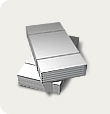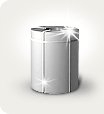Impulse (high-speed) cutting of metals is a type of metal processing, which is carried out by pressure. The essence of this process lies in the use of potential energies available in energy carriers in order to accelerate the moving parts of mechanisms.
At the same time, their kinetic energy is spent on introducing special knife-plates into the metal. They move towards each other at high speed in the plane that is perpendicular to the workpiece axis. The latter is either in motion or motionless.
Impulsive deformation or separation of hot metal ingots due to short-term loads, large cycles, as well as high pressure exerted on the surface of the workpieces, to a greater extent meets all the technical, operational and energy requirements that apply to a particular type of metal.
This type of metal cutting, among other things, is also distinguished by high speed, low production waste, and in addition, the ability to use metal cutting tools when cutting hot workpieces from highly alloyed types of metal.
The principle of preliminary energy storage, as well as the short-term release of energy by the shock method, allows to ensure a high power-to-weight ratio of equipment for this operation, as well as to significantly reduce its weight and dimensions, making it compact.
Cutting is carried out with the help of double-sided knives, carried out synchronously, which makes it possible to ensure the section of the workpiece without unnecessary waste, as well as without any displacement. Each of the knives moves in its own plane, which is perpendicular to the workpiece axis.
If high-speed separation is used, then the cutting procedure is performed using a special cutting tool - a knife, the initial speed of which is approximately twenty-five to thirty meters per second. In addition, with this type of processing, ceramic plates are very successfully used. The plane in which it moves must be perpendicular to the axis of the workpiece being cut.
According to the scheme for implementing this type of metal cutting, immediately before starting the process itself, the knife should be positioned so that it is somewhat removed from the workpiece being processed. This must be done in order for the knife to accumulate as much kinetic energy as possible during acceleration.






